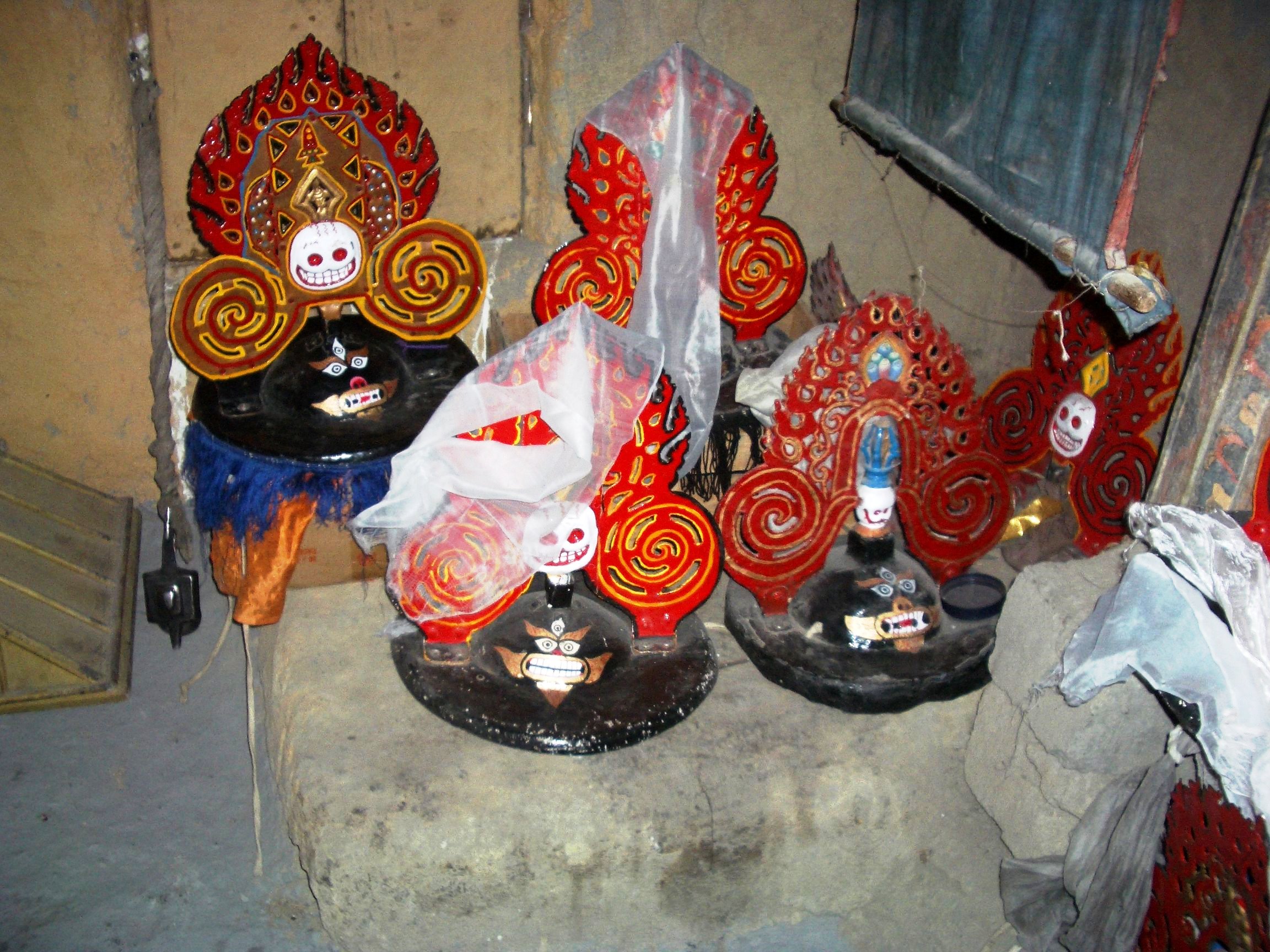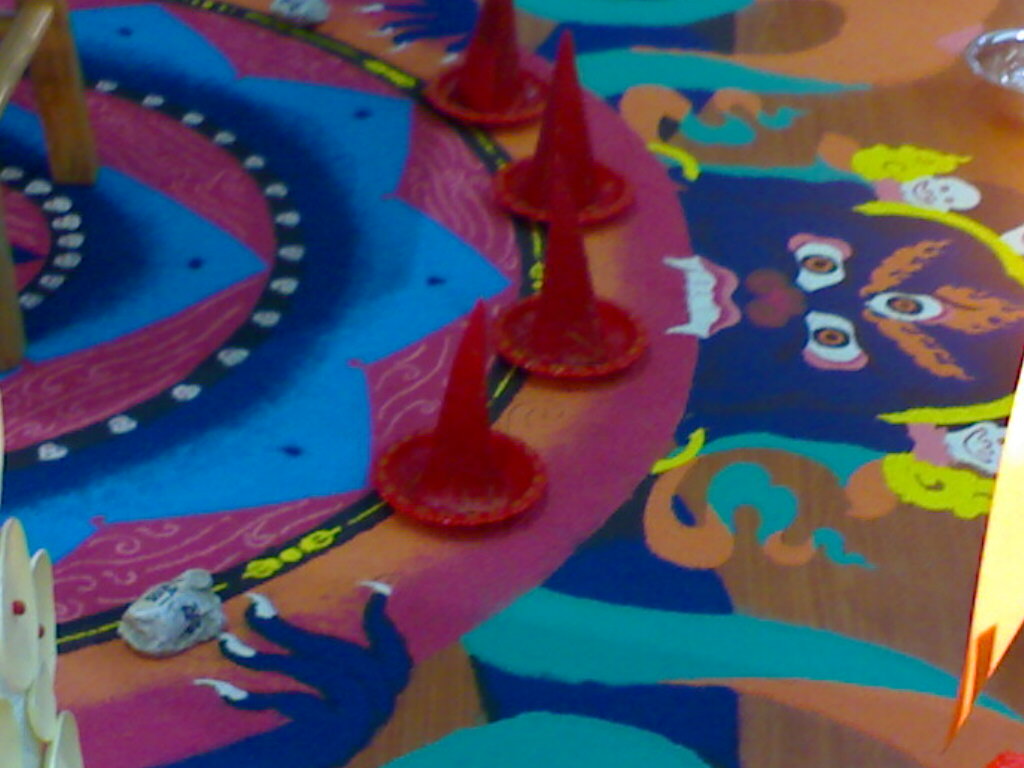Torma on:
[Wikipedia]
[Google]
[Amazon]





 Torma (Skt: Balingta, Tib: Tor-ma, Wylie: gtor ma) are figures made mostly of flour and butter used in tantric rituals or as offerings in
Torma (Skt: Balingta, Tib: Tor-ma, Wylie: gtor ma) are figures made mostly of flour and butter used in tantric rituals or as offerings in





 Torma (Skt: Balingta, Tib: Tor-ma, Wylie: gtor ma) are figures made mostly of flour and butter used in tantric rituals or as offerings in
Torma (Skt: Balingta, Tib: Tor-ma, Wylie: gtor ma) are figures made mostly of flour and butter used in tantric rituals or as offerings in Tibetan Buddhism
Tibetan Buddhism (also referred to as Indo-Tibetan Buddhism, Lamaism, Lamaistic Buddhism, Himalayan Buddhism, and Northern Buddhism) is the form of Buddhism practiced in Tibet and Bhutan, where it is the dominant religion. It is also in maj ...
. They may be dyed in different colors, often with white or red for the main body of the torma. They are made in specific shapes based on their purpose, usually conical in form. A very large, central shrine torma may be constructed for festivals, though typically they are small and placed directly on a shrine, on a plate, mounted on leather or held on a special base like a skull.
History
The tradition of using offering cakes pre-dates Tibetan Buddhism, though traditional Indian offering cakes — called ''bali''Kongtrul (1998) p. 129 or ''balingha''Kongtrul (1998) p. 199 inSanskrit
Sanskrit (; attributively , ; nominalization, nominally , , ) is a classical language belonging to the Indo-Aryan languages, Indo-Aryan branch of the Indo-European languages. It arose in South Asia after its predecessor languages had Trans-cul ...
— are flat instead of conical.
The Tibetan term comes from the root ''gtor-ba'' which means to "cast away, break up, or scatter". This implies both a sense of offering and of letting go or non-attachment.
Variations
Tormas have different uses. Some are created and placed on shrines for ceremonies or to represent deities. Others are used in feast practice and consumed by practitioners during the practice. Others are made to appease spirits, accumulate merit, or remove obstacles. They are mostly made of barley flour and butter, but traditionally other ingredients such as egg, milk, sugar, honey, and even meat may be included depending upon the purpose of the torma.Deity tormas
Deity tormas (Wylie: rten gtor) are kept on the shrine, and represent a particular tantric deity.Padmasambhava (2004) p. 245-246 These tormas vary in complexity from a very simple cone painted white for peaceful deities like Tara and Avalokiteshvara, to very complex designs for semi-wrathful deities like Vajrayogini and Chakrasamvara.Food tormas
Food tormas (Wylie: skang gtor) are used in feast practices and are consumed partially by practitioners during the feast, with leftovers (Wylie: dme gtor) offered to lower beings after being blessed. In some traditions, food tormas are now made with more contemporary ingredients whereas others stay faithful to the barley flour tradition.Offering tormas
Offering tormas may be made for and offered to deities (Wylie: sgrub gtor / mchod gtor), to Dharma Protectors, to obstructing spirits, or to other lower beings. Torma for obstructing spirits are called ''gektor'' (Wylie: gegs gtor).Medicinal torma
A torma may be used in Tibetan medicine to extract an illness from a patient as a cure. The torma is then cast away.Beer (2003) p. 214Captured torma
A ''captured'' torma (Wylie: gta' gtor) may be used to speed completion of activities, by planning to offer the torma at the completion of the activity thereby encouraging successful activity.Inner, secret and very secret torma
Practicing meditation with deity visualization is considered a form of torma offering, though no physical cake is created and then offered. Similarly, offering one's internal emotional and mental experiences and experience of suchness are non-physical forms of torma offerings.Notes
References
* Beer, Robert (2003) ''The Handbook of Tibetan Buddhist Symbols'' * Khenchen Thrangu Rinpoche. Translated by Erik Pema Kunsang (2004) ''Crystal Clear: Practical Advice for Mahamudra Meditators'' * Kongtrul, Jamgon and Padmasambhava. Translated by Erik Pema Kunsang (1998) Light of Wisdom: A Collection of Padmasambhava's Advice to the Dakini Yeshe Rangjung Yeshe Publications, * Kongtrul, Jamgon. Translated by Sarah Harding. (2002) ''Creation & Completion: Essential Points of Tantric Meditation'' * Padmasambhava. Translated by Erik Pema Kunsang (2004) Dzogchen Essentials: The Path that Clarifies Confusion Rangjung Yeshe Publications, * Wilson, Martin (1996) ''In Praise of Tara: Songs to the Saviouress''External links
{{Authority control Tibetan Buddhist art and culture Tibetan Buddhist practices Objects believed to protect from evil Tibetan words and phrases